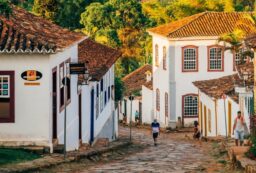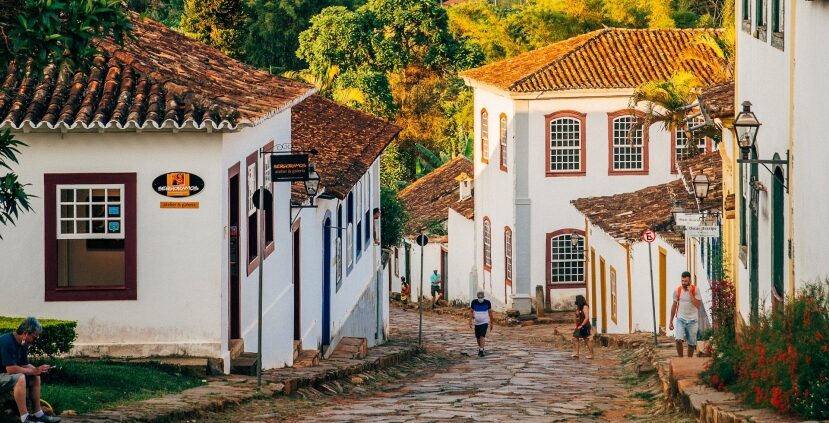
The economy and culture of Brazil’s Minas Gerais state, like its hearty stews, are built on a foundation rich in “minerals,” including gold, diamonds, iron, and numerous precious gems. However, its diverse population nourished Brazil’s growth over several centuries and today adds substance to Minas Gerais travel. Although political turmoil, wars, and human rights issues color Brazilian history, the way Minas Gerais’ cultural institutions and natural marvels are presented in towns such as Ouro Preto and Tiradentes add up to a fresh new way to experience Brazil.
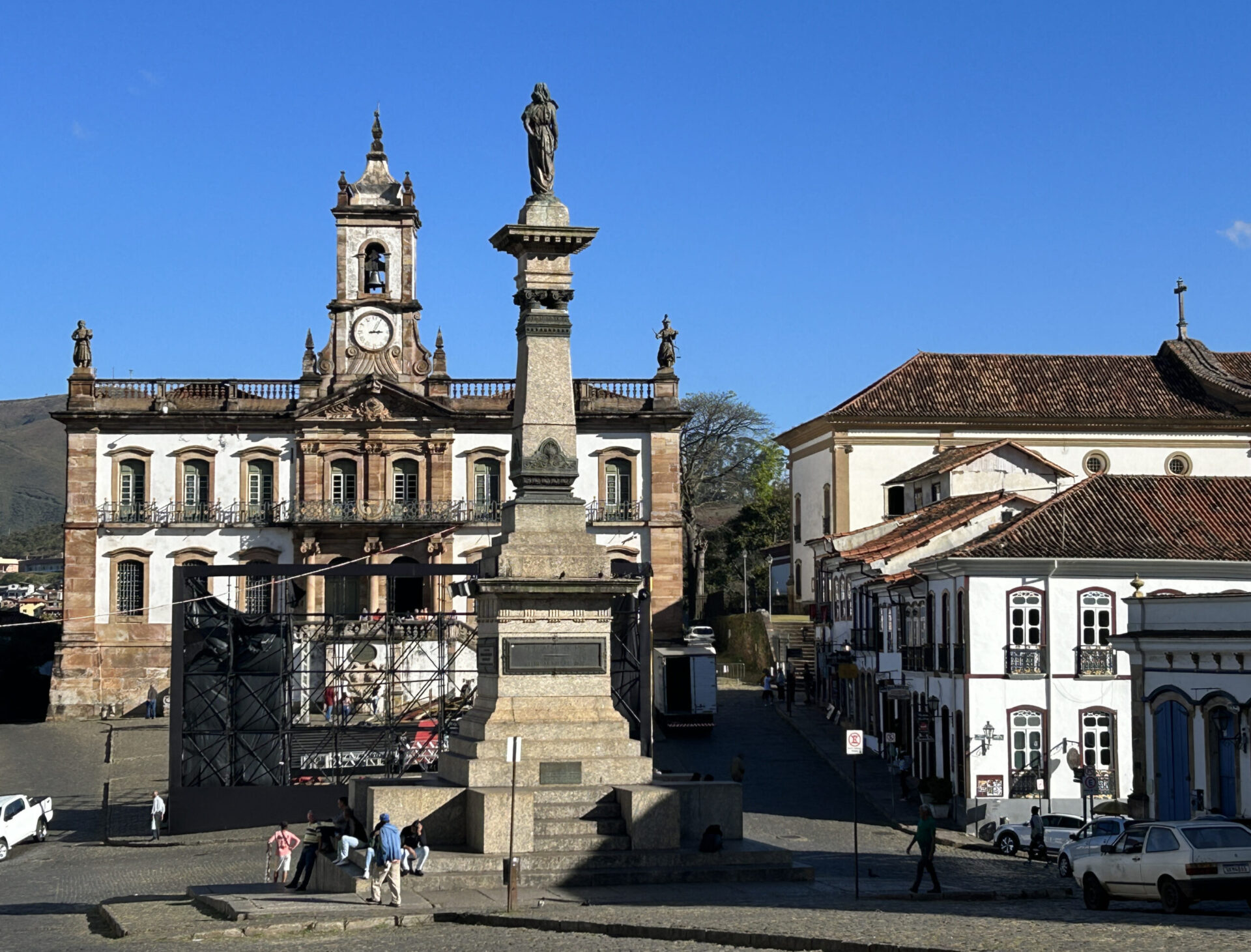
When driving to and from UNESCO World Heritage-designated city Ouro Prêto, the best route to take is the scenic one snaking through hills, ravines, and mountain ranges that open out to reveal some of Brazil’s lesser-known natural treasures. Congonhas do Campo is home to the Church of Our Lady of the Rosary, and Santuário do Bom Jesus de Matosinhos, which has its own UNESCO World Heritage seal of approval. Other small towns worth a stop include Mariana and Diamantina, rich in 18th-century architecture and ornate churches with baroque and rococo features.
These roadside attractions deliver a visually dazzling lead-up to Ouro Prêto. Perched on top of a hill, the 41-room Hotel Solar do Rosário awaits. Built around 1840, the architecture incorporates a facade of French doors and English balconies running around most of the structure. In a similar fashion to “paradores” in Spain’s countryside, the term “solar” refers to accommodations in Brazil repurposed from historic buildings such as mansions, monasteries, and convents that immerse guests in a location’s history and culture while also providing modern comforts, amenities, and eclectic décor mixing antique and modern furnishings and art. The property certainly accomplishes that, with the added benefit of being across the street from the Nossa Senhora do Rosário Church and Pico do Itacolomi.
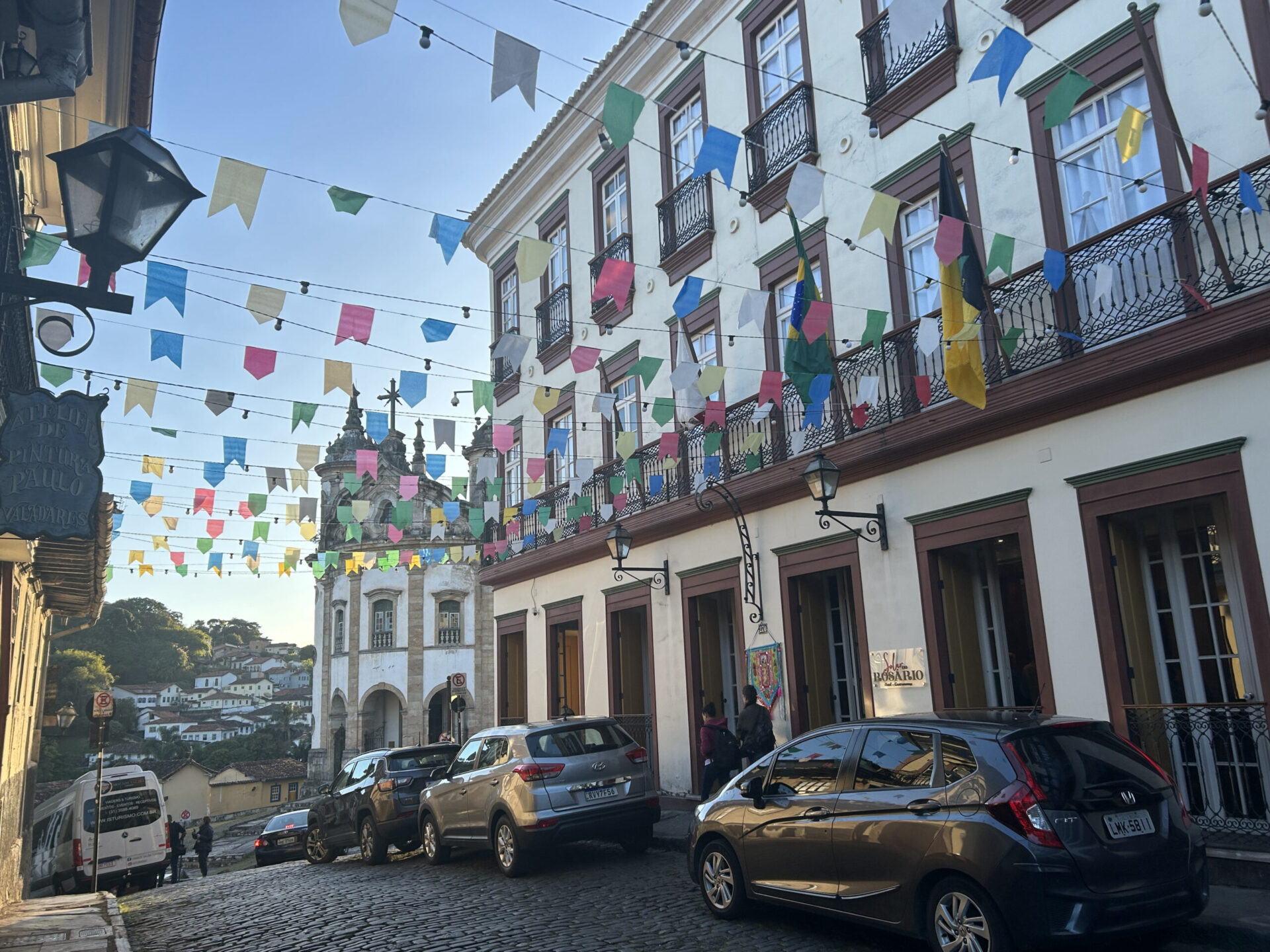
Each room is outfitted with wooden fittings and furniture, a flat-screen cable TV, air conditioning, heating, and a mini-bar. The private bathroom is set with a shower, free toiletries, and a hairdryer. Some suites also include a hot tub and city or garden views. The hotel is anchored by Olga Nur Solar do Rosário, the sister restaurant of the original location in Minas Gerais capital Belo Horizonte. While contemporary food and cocktail menus similar to the parent restaurant are presented at lunch and dinner, the breakfast presentation has a warmth and homey quality that could be described as a bridge between artsy contemporary restaurants lining the downtown streets and humble mom-and-pop eateries whose recipes are clearly passed down from one generation to the next.

"Strolling down any of Ouro Prêto winding streets reinforces why it is described as a “living museum.” "
One of the best features of the Hotel Solar do Rosário is its multi-level outdoor area with almost 360-degree views of Ouro Prêto’s key landmarks and nearby mountains. It is a blink-or-miss-it part of the hotel as the main doorway leading to it blends in with the charming décor of the lobby bar and lounge and the check-in desk. In addition to indoor and outdoor pools, the outdoor architecture and landscaping reflect the way European affluence of the 18th and 19th centuries brought in by Portuguese royal representatives and elites co-existed with native mountains, plants, and trees that remind the onlooker they are clearly in the heart of Brazil.

Solar do Rosário feels a touch isolated and yet is a relatively easy 10- to 15-minute walk to and from the main square Praça Tiradentes and the Churches of São Francisco de Assis, São José, and São Francisco de Paula. Strolling down any of the winding streets reinforces why it is described as a “living museum,” even as the historic buildings are intermixed with smart contemporary restaurants and eclectic shops and boutiques. However, of all the cultural attractions, the Museum of the Inconfidência will put everything you may know about Brazilian history and Minas Gerais state into perspective. The building itself is an interesting paradox, as it served as a foundry, treasury, and prison for members of the Inconfidência who led a failed 1789 rebellion for Brazilian independence from the Portuguese crown. Just beyond the city, a visit to Minas JEJE and the nearby Church of the Congolese Monarch is worth your time as they relay the stories of those who were brought in from Africa as slaves.
The cosmopolitan makeup of the town is also reflected in its bright, cheerfully decorated restaurants. Bené da Fluta, built into an 18th-century townhouse, resembles an art gallery with windows providing frames for stunning outdoor views. The menu mixes traditional Minas dishes with some European influences, along with simple preparations of steak and salmon. Appetizers, particularly the cod fritters and pickled vegetables served with the dinner rolls, provide zesty counterparts to the substantial stews, soups, and meat dishes. Hidden underneath another hilltop 150 meters from the city center, Restaurante Contos de Réis has a more old-world tavern aesthetic but earns equally high marks for its takes on the simple, sturdy Minas preparations.
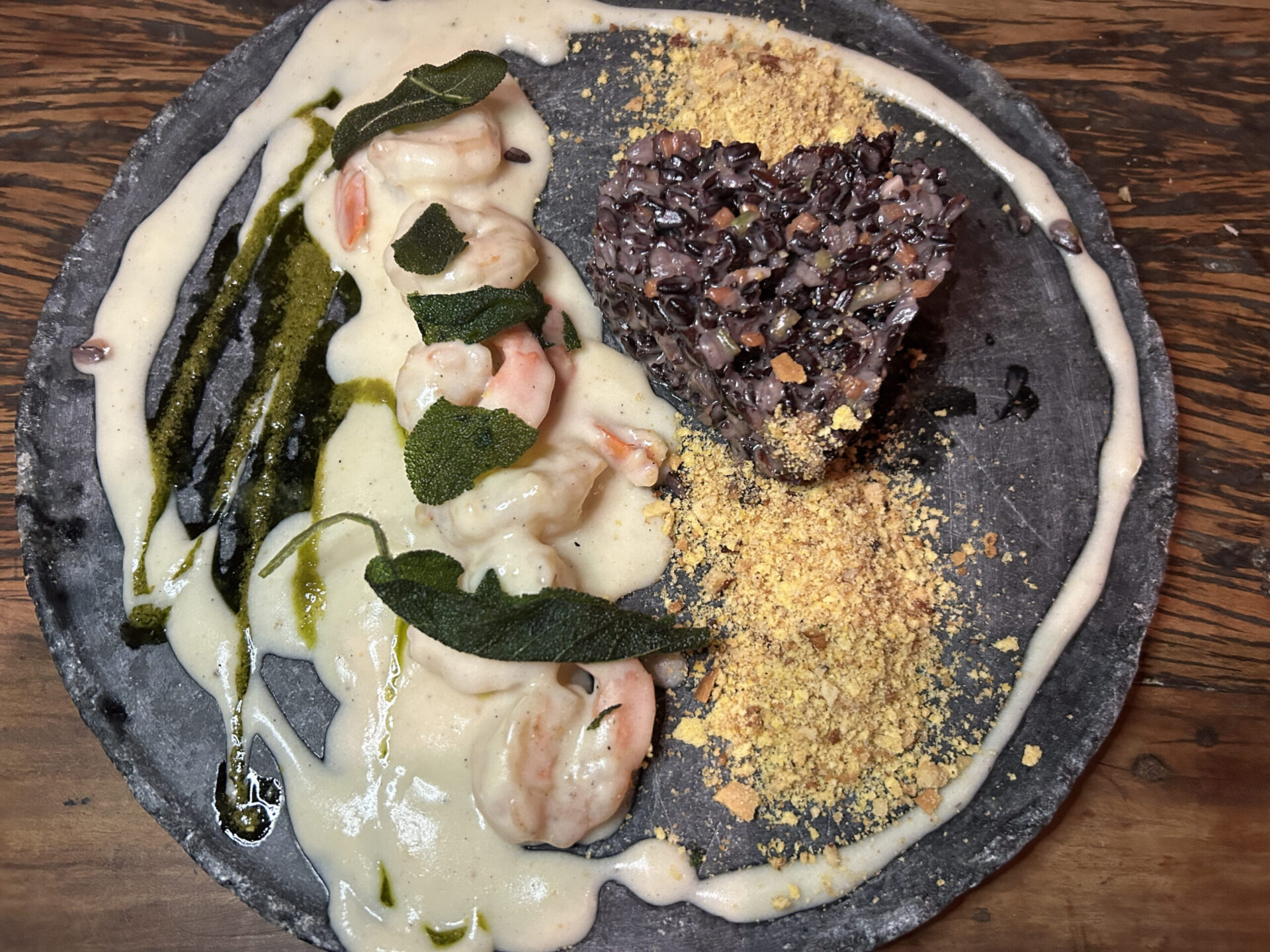
Adventurous diners can deep-dive into rustic Minas dishes such as Canjiquinha stew with pork ribs (originating in the 19th Century, blending indigenous and Portuguese influences), Bamba de Couve (corn flour soup with kale, sausage, pork, and fried polenta), Tutu à Mineira (slices of pork loin, boiled egg, sausage, and pork cracklins accompanied with beans whipped with cassava flour), Menina do Sobrado (sereno meat sautéed in cassava mush, accompanied by pumpkin puree and garlic rice), Tropeiro (a dish with beans, sausage, bacon, collard greens, eggs, and manioc flour), and roasted chicken flanked with okra.
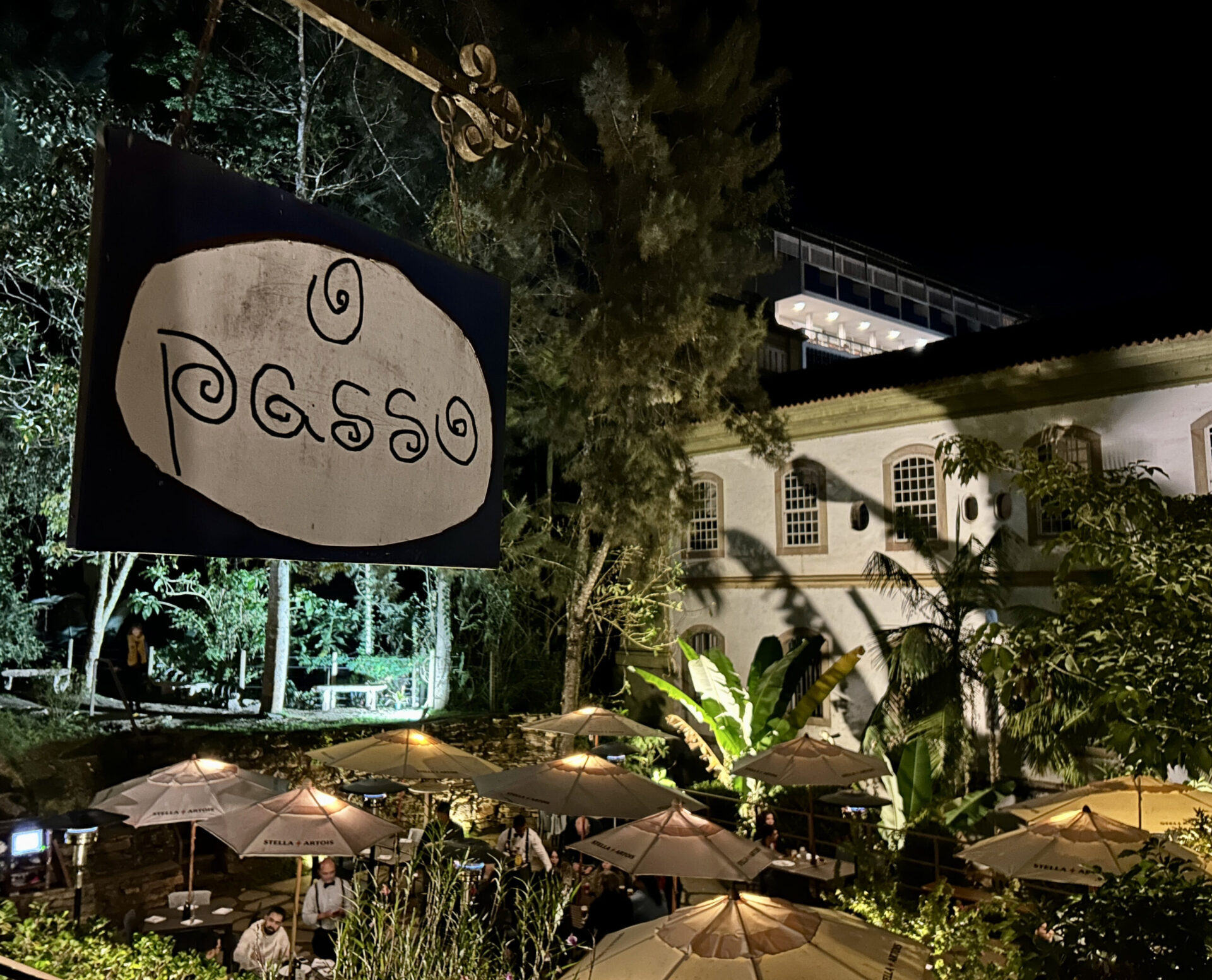
O Passo is worth at least one visit with its lushly landscaped outdoor patio and many jewel-toned dining rooms adorned with modern. The best dishes visually parallel the surroundings, and prime examples of this include appetizers such as Exibidas (phyllo dough baskets stuffed with pumpkin cream and topped with dried beef or corn cream, topped with Minas cheese and bacon farofa) and Pasteis de Angu (water-mill cornmeal dough, stuffed with meat, accompanied by lightly spiced tomato chutney). The cocktail program is innovative and expands well beyond caipirinhas. The signature Ouropretanagin, blending gin, passion fruit, elderflower, lemon juice, and ginger foam, is a must if gin is your spirit.
"Solar da Ponte's indoor and outdoor public areas feel like they are part of a private country home…sophisticated but with rustic, unfinished-looking spots that lend authenticity."
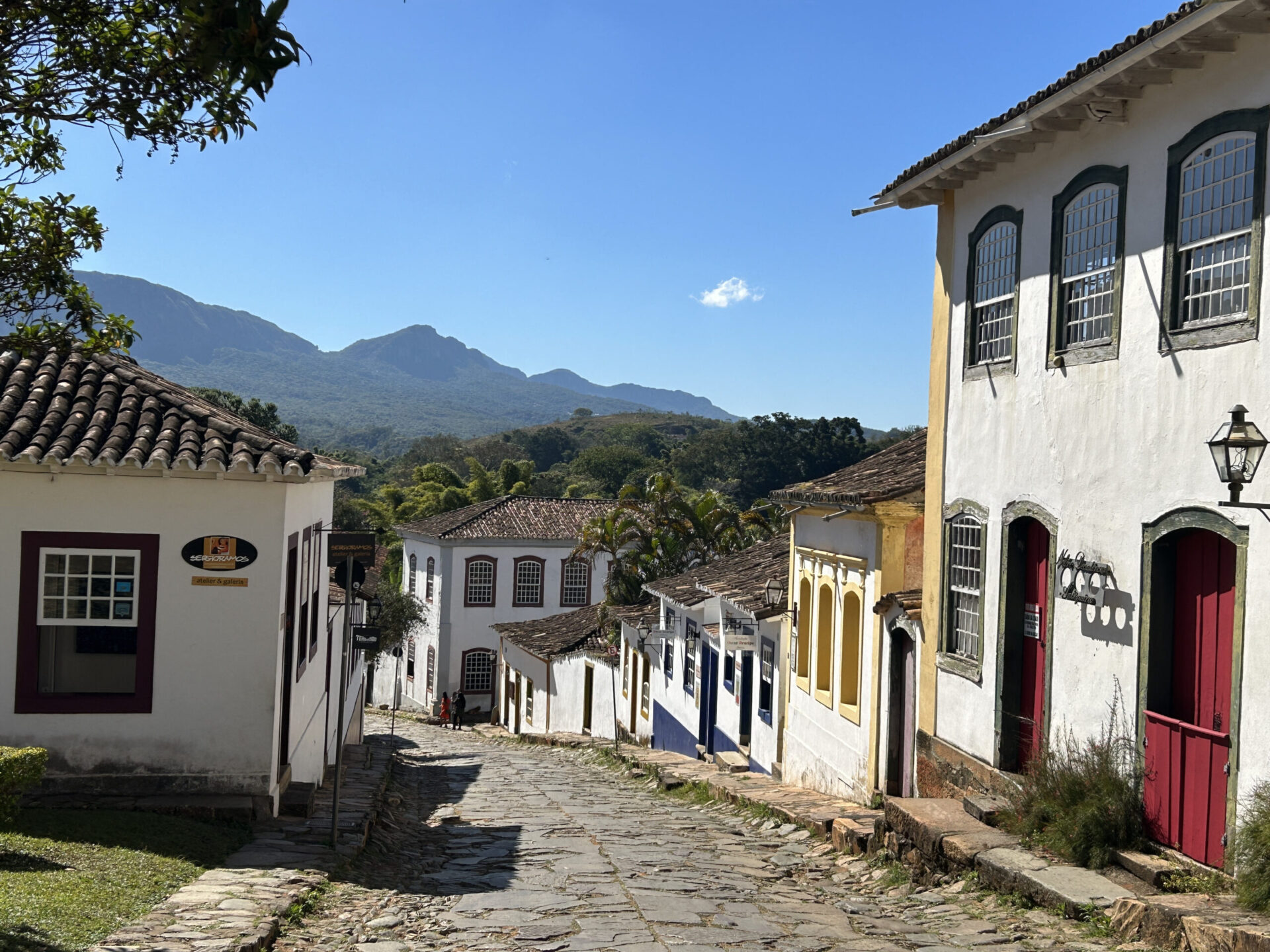 Tiradentes, a three-hour drive from Ouro Prêto, was founded at the beginning of the 18th century and marked by nearly three centuries of complex history. It changed hands and names several times, but ultimately emerged in the 1960s as a destination bolstered by the restoration of houses, landmarks, fountains, and churches. In the following decades, a variety of restaurants, high-end shopping, and artisan-craft boutiques opened inside some of the buildings. Its increasing popularity also comes from outdoor activities, such as horseback riding, hiking, biking, and swimming at nearby waterfalls, all taking full advantage of the region’s natural attributes.
Tiradentes, a three-hour drive from Ouro Prêto, was founded at the beginning of the 18th century and marked by nearly three centuries of complex history. It changed hands and names several times, but ultimately emerged in the 1960s as a destination bolstered by the restoration of houses, landmarks, fountains, and churches. In the following decades, a variety of restaurants, high-end shopping, and artisan-craft boutiques opened inside some of the buildings. Its increasing popularity also comes from outdoor activities, such as horseback riding, hiking, biking, and swimming at nearby waterfalls, all taking full advantage of the region’s natural attributes.
Solar da Ponte, right outside Tiradentes’ historic center, is an embodiment of Tiradentes’ evolution. While it was established in 1972 by U.K. native John Parsons and Brazilian-born Anna Maria, the structure feels like it has been around for a lot longer. Like fine European bed-and-breakfasts, each room has its own distinctive décor scheme. The indoor and outdoor public areas feel like they could be part of a private country home…sophisticated but with rustic, unfinished-looking spots that lend authenticity to the property.
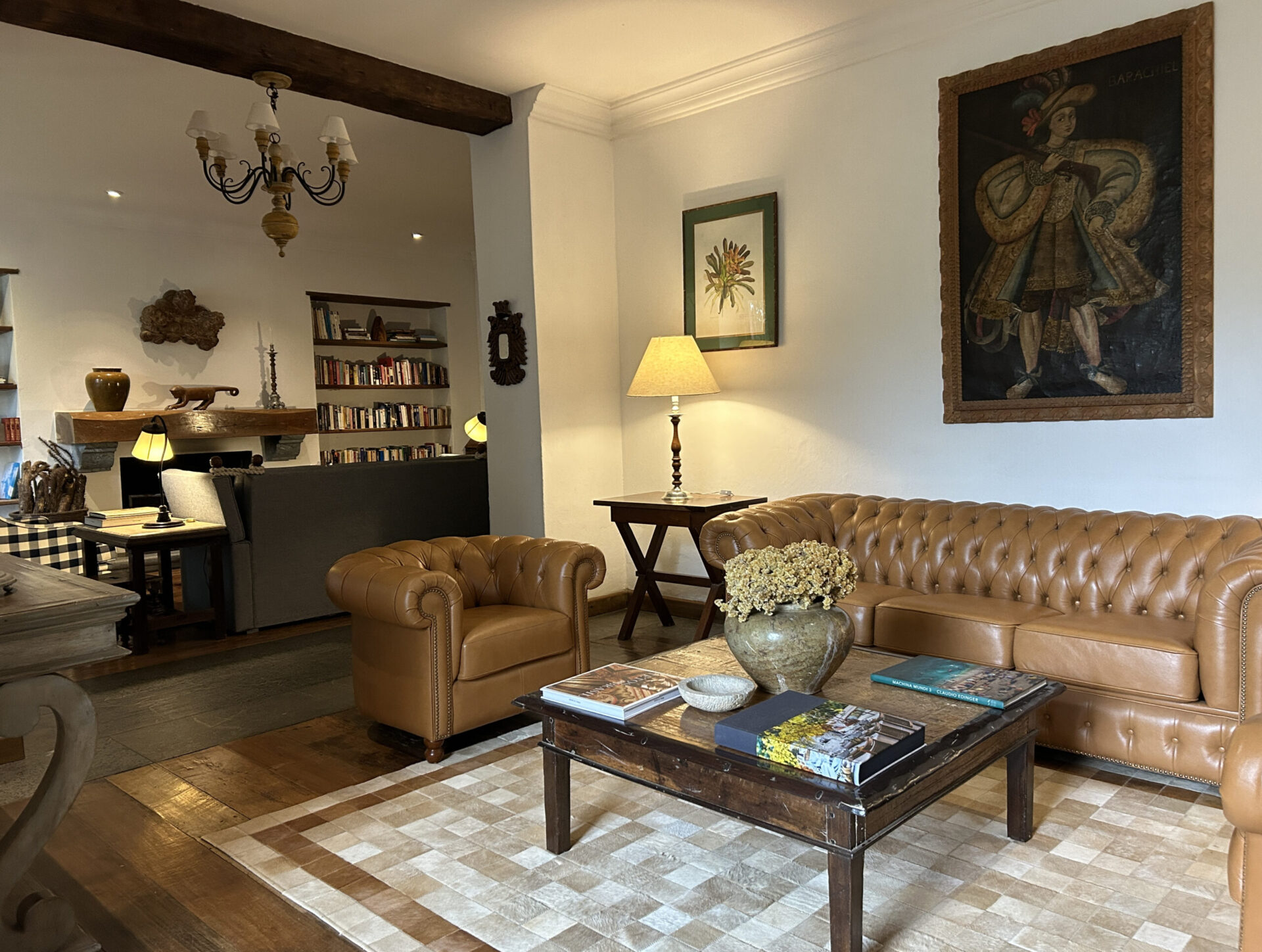
While there is a main dining room where breakfast and afternoon tea are served, the Gastronomic Atelier is intended to accommodate more inventive formal functions and special-occasion gatherings, from wine tastings and family celebrations to business retreats and meetings, lectures, and other group events. With a capacity of up to 40 people and five tables seating up to eight people, the room can be arranged in different ways to suit the planner’s goals. An attached pool balcony can also accommodate an additional 10 people during the warmer months in the Southern Hemisphere.
The best nearby fine dining establishments have a similar sensibility. Tragaluz Restaurante Casa, built into a 200-year-old stone house, carves out a distinctive identity through chef Felipe Rameh’s unexpected approach to fusing traditional and modern techniques. A menu filled with simple but approachable dishes brings you back to the present, along with sommelier Antônio Eduardo’s astute pairing recommendations. The fanciful menu is part of the fun, with delightful illustrations that at first glance make it look like a volume of children’s stories about the origins of the Guinea hen, the restaurant’s namesake, which is a prime ingredient in several signature dishes.

Atrás da Matriz Pizza & Bacalhau is Brazilian-Portuguese through and through, with its emphasis on bacalhau (salt cod) in its starters and mains. While the interiors and about half of the menu offerings are rooted in the area’s 18th and 19th origins and foodstuffs, the kitchen can get pretty adventurous. Case in point is the Bacalhau do Aniversário (Birthday Cake Bacalhau), where cod slivers are layered with zucchini and almonds seasoned with rosemary. Simple preparations, such as Bacalhau ao Alho e Óleo (fried cod fillet in olive oil and garlic) or “Portuguese” style (with olives, garlic, and tomato, with or without ham) are perfectly executed and full of flavor.
Brazil’s Minas Gerais state has some of the most evocatively-named towns and cities in the Southern Hemisphere, right down to the capital city Belo Horizonte (“beautiful horizon”). To get it its soul and mine some of the region’s history-rich history and culture, however, it’s worth the effort to rent a car and get a space in these turned-out “base camps” to experience a culture based on discovery and embrace of the less familiar.
For additional information, visit Embratur, the website of the Tourism Board of Brazil.
















